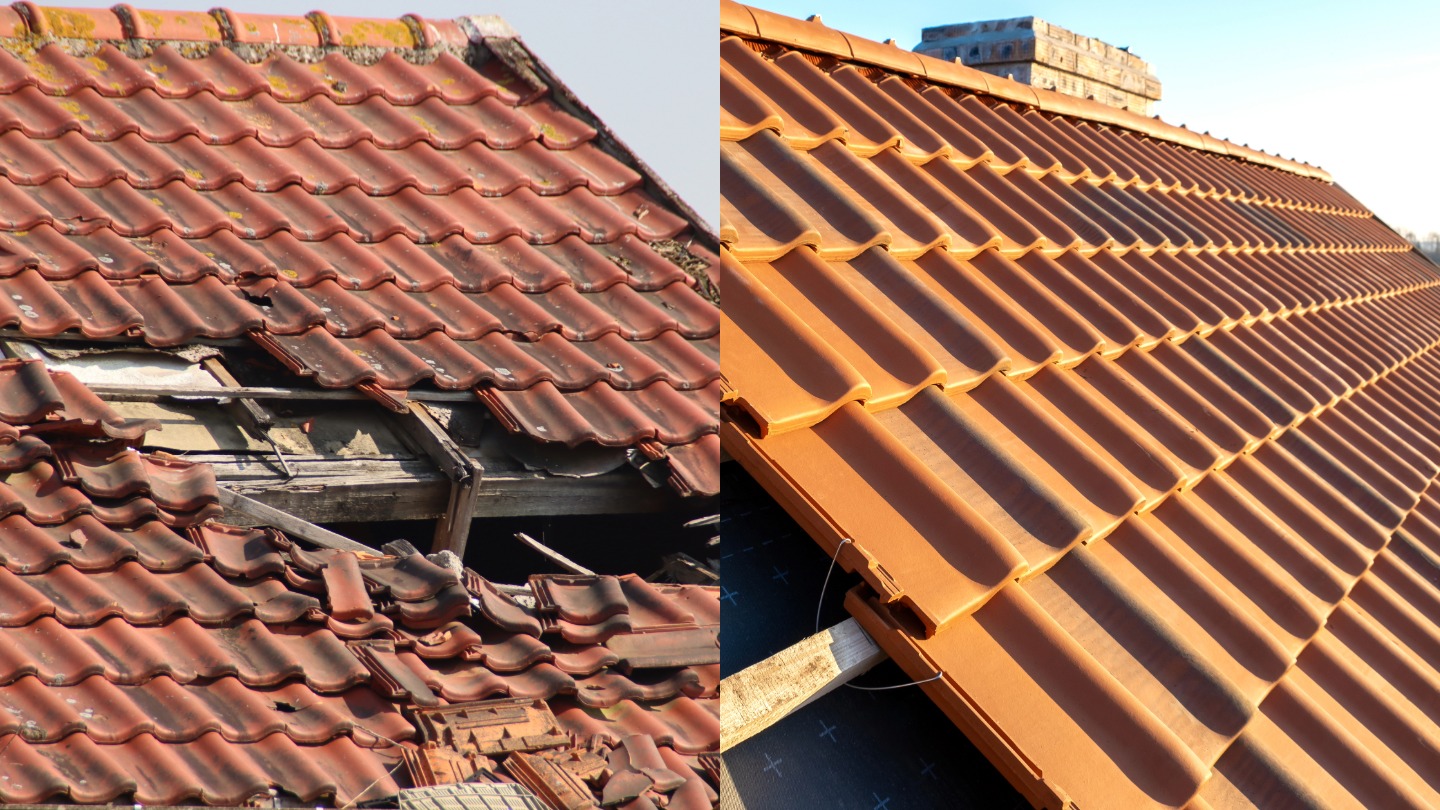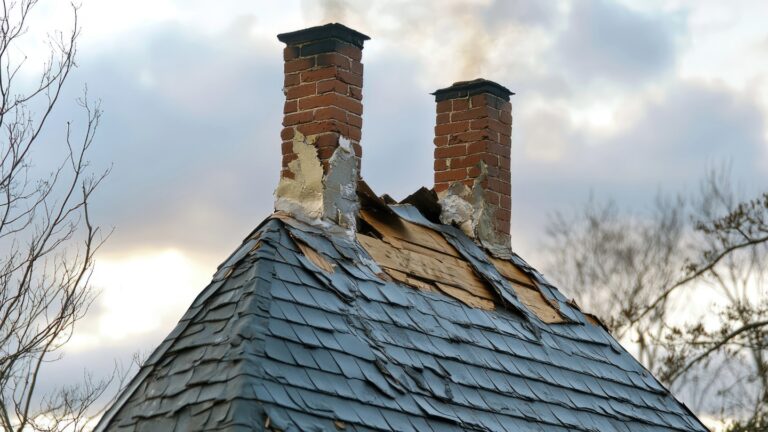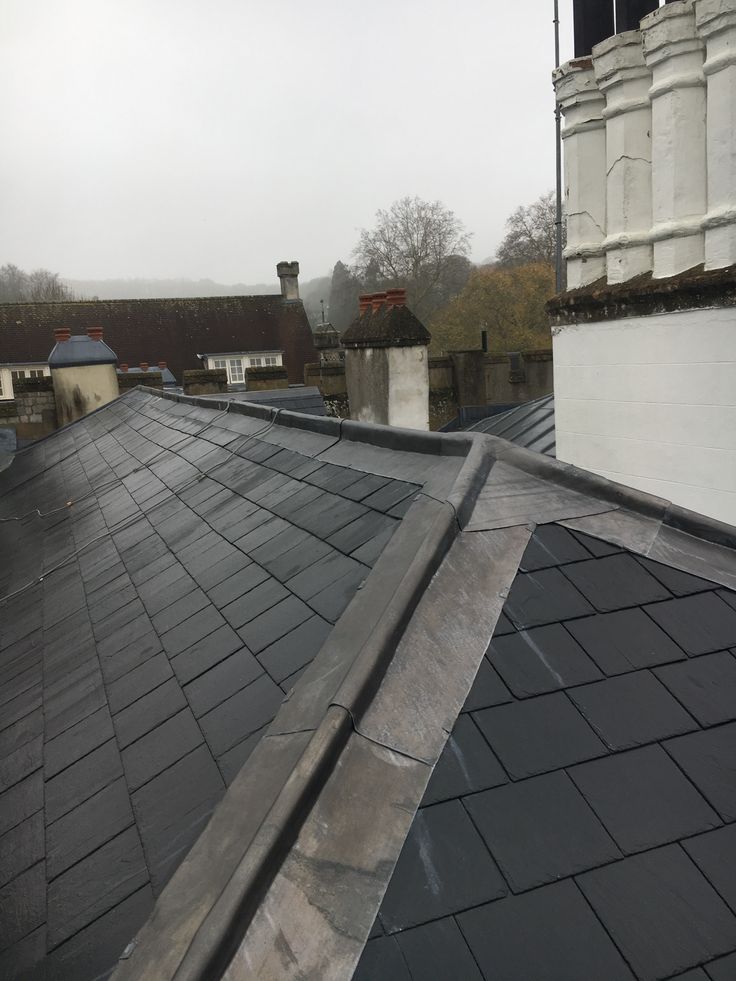Right then, your roof’s looking a bit dodgy? Maybe a few tiles are out of place, or you’ve spotted a damp patch on the ceiling. It’s a classic homeowner dilemma: do you just patch it up, or is it time for the whole shebang? Deciding between a roof repair and a full replacement can feel like a big deal, and honestly, it is. Getting it wrong can cost you more in the long run, so let’s have a proper look at what’s what when it comes to roof repair vs replacement.
Key Takeaways
- A roof repair is for fixing specific, localised problems like a few missing shingles or a small leak, whereas a replacement involves stripping off the old roof and putting on a completely new one.
- The age of your roof is a big clue; generally, asphalt shingle roofs last 15-20 years, so if yours is older, replacement might be on the cards.
- If the damage is spread out over a large area, or if you’re seeing leaks in multiple spots, it’s usually a sign that a full replacement is the way to go.
- While repairs are cheaper upfront, constantly fixing an old roof can end up costing more than a one-off replacement over time.
- A new roof can make your home more energy-efficient, boost its value, and give you much-needed peace of mind for years to come.
Understanding the Core Differences: Roof Repair vs Replacement
Right then, let’s get down to brass tacks about your roof. When things start looking a bit iffy up there, you’ve generally got two main paths you can go down: a repair or a full-blown replacement. They sound similar, but honestly, they’re worlds apart in what they involve and what you get out of them.
What Roof Repair Entails
Think of a roof repair as a bit like patching up a hole in your favourite jumper. It’s about fixing a specific problem in one area. So, if a few tiles have blown off in a gale, or maybe the flashing around your chimney has started to leak, a repair is usually the way to go. It’s targeted work, focusing on restoring the integrity of that particular spot without touching the rest of the roof. It’s generally quicker and, you guessed it, cheaper than replacing the whole thing.
The Scope of Roof Replacement
Now, a roof replacement is a much bigger deal. This is where you’re essentially getting a whole new lid for your house. We’re talking about stripping off all the old roofing materials – the tiles, the felt, everything – right down to the wooden structure underneath (that’s the ‘decking’). Then, a completely new system is put in place. It’s a full overhaul, designed to give your home protection for decades to come.
Key Distinctions in Approach
The main difference really boils down to the scale of the job. Repairs are about fixing isolated issues, like dealing with a single leaky gutter or replacing a handful of damaged shingles. Replacements, on the other hand, are about addressing the entire roofing system when it’s reached the end of its useful life or has suffered widespread damage. It’s the difference between fixing a leaky tap and replumbing the entire house.
Here’s a quick rundown:
- Repair: Fixes specific, localised problems.
- Replacement: Involves removing and installing a completely new roof.
- Cost: Repairs are typically less expensive upfront.
- Time: Repairs are usually much faster.
- Outcome: Repairs extend the life of the existing roof; replacements provide a new start.
Deciding between the two isn’t just about the immediate cost. It’s about looking at the bigger picture – how old is your roof, how much damage is there, and what’s the most sensible long-term solution for your home’s protection and value?
So, while a repair might seem like the easy option for a small problem, sometimes it’s just a temporary fix. Understanding these core differences is the first step to making the right call for your home.
Assessing Your Roof’s Condition for Informed Decisions
Right then, before we even start thinking about shelling out cash for either a quick fix or a whole new roof, we really need to get a handle on what’s actually going on up there. It’s not just about spotting a few loose tiles, you know. We’ve got to be a bit more thorough.
The Impact of Roof Age on Longevity
Your roof, much like us, doesn’t last forever. Different materials have different shelf lives, and how long it’s been exposed to the elements really matters. Think of it like this: a roof that’s been doing its job for 25 years is probably more tired than one that’s only seen a decade of sun and rain.
Here’s a rough idea of what you might expect:
- Asphalt Shingles: Usually good for about 15-20 years, sometimes a bit more if they’re top-notch and the weather’s been kind.
- Flat Roofs: These can often last 20-30 years, but they do need a bit of regular TLC.
- Metal or Tile Roofs: These are the marathon runners, often going for 50 years or even longer if you keep them in good nick.
If your roof is nudging or has already passed these ages, it’s a strong signal that replacement might be on the cards, even if the damage seems minor right now. Trying to patch up something that’s past its prime can end up costing you more in the long run with constant little fixes.
Evaluating the Extent of Damage
So, what exactly are we looking for when we assess the damage? It’s not always obvious. Sometimes it’s just a few missing shingles after a windy spell, or maybe you’ve spotted a damp patch on the ceiling. The key is to figure out if the problem is isolated or if it’s a sign of a bigger issue.
- Look for: Cracked, curled, or missing shingles. Granule loss (that gritty stuff that washes off shingles). Sagging areas on the roof. Damaged flashing around chimneys or vents.
- Check inside: Water stains on ceilings or walls, especially after rain. Any musty smells in the loft could mean dampness is getting in.
- Consider the location: Is it just one small section, or are multiple parts of the roof showing wear and tear?
If you’ve got a few dodgy tiles on one slope, a repair is probably fine. But if you’re seeing problems spread out across the whole roof, or if the underlying structure seems compromised, it’s a different story.
Recognising Early Warning Signs
Catching problems early is always the best approach. It can save you a lot of hassle and money. Don’t ignore those little things that seem insignificant at first.
- Moss or Algae Growth: While not always a sign of immediate danger, excessive growth can trap moisture and degrade roofing materials over time.
- Granule Loss: If you see a lot of shingle grit in your gutters or downspouts, it means the shingles are wearing out and losing their protective layer.
- Neighbourhood Watch: If your neighbours are all getting new roofs around the same time, it’s a good indicator that your roof might also be nearing the end of its lifespan.
Sometimes, a small leak can be a symptom of a much larger problem brewing beneath the surface. It’s easy to think ‘oh, it’s just a bit of water’, but that moisture can be slowly damaging the roof deck and even the structural timbers of your house. Getting it checked out properly, rather than just patching the visible leak, is really important for the long-term health of your home.
When a Roof Repair Is the Prudent Choice
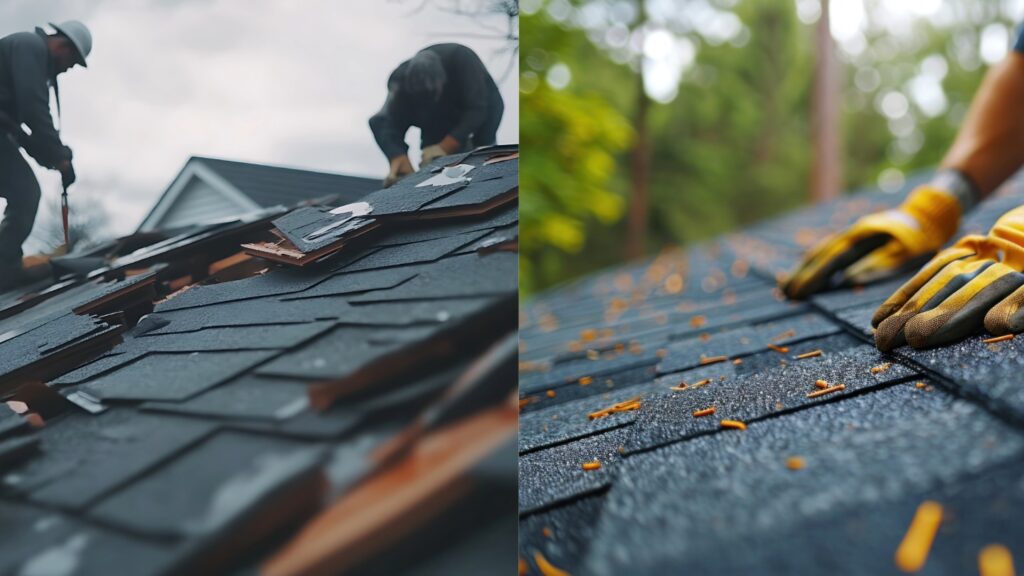
Sometimes, you don’t need a whole new roof. Honestly, it’s a relief when you find out a simple fix will do the trick, right? It saves you a load of cash and hassle. But how do you know if a repair is genuinely enough?
Benefits of Targeted Repairs
When the damage is limited to a specific area, a repair is often the way to go. Think of it like fixing a single leaky pipe instead of redoing your entire plumbing system. It’s all about addressing the problem spot without disturbing the rest of your roof. This could mean replacing a few cracked tiles after a storm, resealing flashing around a chimney that’s started to lift, or patching up a small section where the underlayment might have been compromised. The key is that the rest of your roof is still in pretty good shape. It means you’re not just putting a plaster on a much bigger issue.
Cost-Effectiveness of Minor Fixes
Let’s be real, the biggest draw of a repair is the price tag. Compared to a full replacement, which can run into thousands, a repair is significantly cheaper. You’re only paying for the materials and labour for the specific work needed. This makes it a much more accessible option for many homeowners. If your roof is relatively young, say under 15 years old, and the damage is isolated, a repair can buy you a good few more years of service without breaking the bank. It’s a sensible financial move when the roof’s structure is still sound.
Preserving Existing Warranties Through Repair
This is a big one that people often overlook. If your roof is still under a manufacturer’s or installer’s warranty, you need to be careful. Sometimes, undertaking a full replacement when it’s not strictly necessary can void your existing warranty. Sticking to repairs, especially for issues covered by the warranty, helps keep that protection in place. It’s always worth checking the terms of your warranty, but generally, targeted fixes are less likely to cause issues than a complete overhaul. It’s a good idea to get professional advice on flat roof repairs if you suspect an issue, as they can advise on warranty implications.
Here’s a quick rundown of when a repair usually makes sense:
- Your roof isn’t ancient: If it’s less than 15-20 years old and the main structure is solid.
- Damage is localised: A few missing shingles, a small leak in one spot, or some loose flashing.
- No widespread problems: No sagging, no signs of rot, and the decking underneath is dry.
- Recent, isolated damage: Like wind lifting a few shingles or a branch causing a specific impact.
Sometimes, a repair is just a temporary fix, but when the damage is minor and the roof is otherwise healthy, it’s a perfectly sensible solution. It buys you time and saves you money, which is always a win-win.
Identifying When Roof Replacement Is Necessary
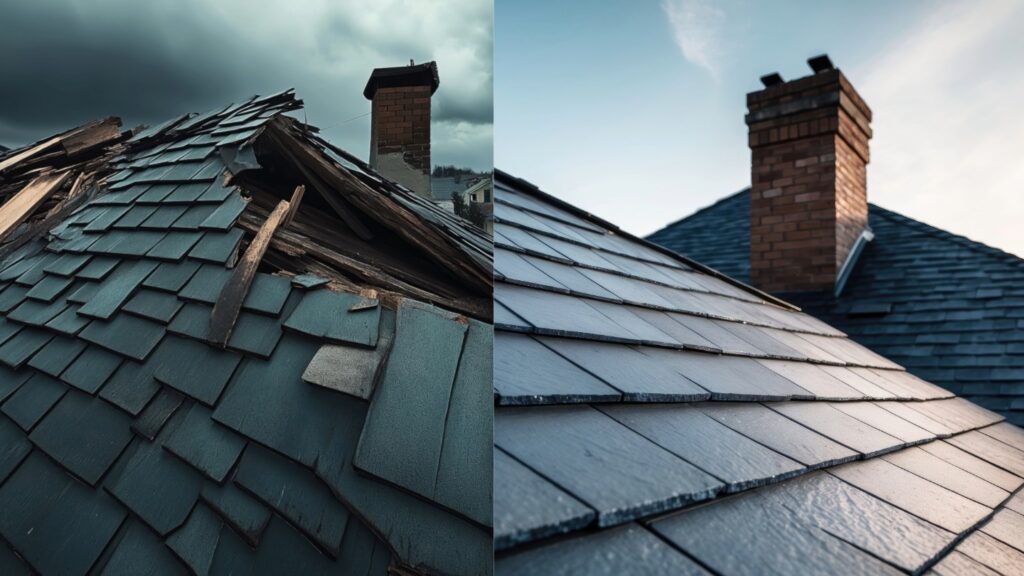
Sometimes, you’ve just got to face facts. That little patch-up job isn’t going to cut it anymore, and it’s time to think about a whole new roof. It’s a big decision, no doubt about it, but there are definitely signs that tell you it’s the right move for your home’s safety and your own peace of mind.
Signs Pointing to Comprehensive Replacement
If you’re finding yourself calling the roofer out more often than you’d like, it might be a sign that the whole system is on its last legs. Think about it: if you’re constantly fixing the same bits, or new problems keep popping up all over the place, it’s probably not just a few bad apples. We’re talking about widespread issues like shingles that are curling up at the edges, or you’re finding granules in your gutters after every downpour. These aren’t isolated incidents; they’re usually indicators that the roof as a whole is failing.
- Age is a big one. Most standard asphalt shingle roofs have a lifespan of about 20 to 25 years. If yours is nudging or has already passed that mark, it’s really worth considering a replacement rather than pouring money into constant repairs.
- You’ve had multiple leaks in different areas of your home recently.
- There’s visible sagging across large sections of your roof.
- Shingles are consistently missing or damaged after even mild weather.
Addressing Widespread Structural Issues
Beyond just the surface-level stuff, you need to look at the bigger picture. If water has managed to get through and cause damage to the roof deck – that’s the wooden part underneath the shingles – then you’ve got a serious problem. You might notice soft spots when you walk in the attic, or even see mould starting to grow. This kind of rot or water saturation means the whole structure is compromised and a simple fix just won’t do. It’s like trying to patch up a rotten plank in your floor; you really need to replace the whole thing to make it safe.
When the underlying structure of your roof is compromised by rot, water damage, or sagging, it’s no longer just about the outer layer. These issues affect the integrity of your entire home and require a full replacement to ensure safety and prevent further, more costly problems down the line.
The Case for Replacement After Severe Weather
Sometimes, nature throws a curveball. A really fierce storm, with high winds and heavy hail, can do a surprising amount of damage all at once. Even if you can’t see it all immediately, a severe weather event can compromise the integrity of your entire roof. You might have tiny cracks in shingles that will only get worse, or the underlayment could be damaged, leaving your home vulnerable. If you’ve had a major storm roll through and you’re noticing a lot of damage, or even if you’re just worried about hidden issues, getting a professional inspection for a potential replacement is a smart move. It’s better to be safe than sorry, especially when it comes to protecting your home from the elements.
Financial Considerations: Roof Repair vs Replacement Costs
Right, let’s talk about the elephant in the room: money. Deciding between a repair and a full replacement often boils down to what your wallet can handle now versus what makes sense in the long run. It’s a bit like deciding whether to patch up an old jumper or buy a whole new one, isn’t it?
Typical Investment for Repairs
Generally speaking, a repair is going to be much kinder on your bank balance upfront. We’re talking about fixing a few loose tiles, sealing a small leak, or replacing some damaged flashing. These sorts of jobs can often be done for a few hundred quid, maybe up to a grand or so if it’s a bit more involved, like sorting out some rotten underlayment. It’s a quick fix, and it gets the immediate problem sorted without breaking the bank. For instance, if you’ve had some storm damage, a professional can often sort out specific storm damage quite efficiently.
Understanding Full Replacement Expenses
Now, a full roof replacement? That’s a different kettle of fish entirely. This is where you’re looking at removing everything and starting fresh. The cost here can vary wildly depending on the size of your house and the materials you choose – think anywhere from £5,000 to £15,000, and sometimes even more if you’re going for fancy metal or tile. It’s a big chunk of change, no doubt about it, but you are getting a whole new roof that should last for decades.
Long-Term Financial Implications
So, which is the better deal? Well, it’s not always as simple as the cheapest option now. While repairs are cheaper initially, if your roof is getting on a bit, you might find yourself needing more and more repairs over time. Those small costs can really add up, and you might end up spending more in the long run than if you’d just gone for a replacement. A new roof, while a big expense now, can save you money down the line through better insulation (meaning lower energy bills) and fewer unexpected repair bills. Plus, it can add a good bit of value to your home if you ever decide to sell.
It’s worth remembering that sometimes, your home insurance might cover some or all of the costs if the damage was caused by a specific event like a severe storm or hail. Always check your policy!
Here’s a rough idea of what you might expect:
| Job Type | Typical Cost Range (UK Pounds) |
|---|---|
| Minor Repair | £300 – £1,000 |
| Major Repair | £1,000 – £3,000+ |
| Full Replacement | £5,000 – £15,000+ |
Ultimately, it’s about weighing up the immediate cost against the potential future expenses and the lifespan of your current roof.
Long-Term Advantages of a New Roof
Enhanced Energy Efficiency
Putting in a brand new roof isn’t just about stopping leaks; it can actually make your home more comfortable and cheaper to run. Modern roofing materials often have better insulation properties than older ones. This means your home stays warmer in the winter and cooler in the summer without your heating or air conditioning working overtime. Think about it – less energy used means lower bills, which adds up nicely over the years. It’s a win-win for your wallet and the planet.
Increased Property Value and Appeal
Let’s be honest, a tired-looking roof can really bring down the look of your house. A new roof, on the other hand, makes a massive difference to your home’s curb appeal. It’s one of the first things people notice, whether they’re just passing by or thinking about buying your place. If you’re planning to sell anytime soon, a new roof is a really strong selling point. Buyers see it as a major expense they won’t have to deal with, which can significantly boost your home’s market value. It’s an investment that often pays you back when it’s time to move on.
Peace of Mind and Future Protection
This is a big one. Knowing your home is properly protected from the weather, day in and day out, is priceless. A new roof, installed correctly with good materials, gives you that security for decades. You won’t be constantly worrying about the next storm or whether that small drip is going to turn into a big problem. It means fewer unexpected repair bills and less stress. Ultimately, a new roof is about safeguarding your home and your family for the long haul.
Here’s a quick look at what you can expect:
- Extended Lifespan: New roofs typically come with warranties lasting 20-30 years or even more, depending on the materials. This means you’re covered for a very long time.
- Reduced Maintenance: While all roofs need some upkeep, a new one will require far less attention than an older, patched-up one.
- Modern Standards: New roofs are built to meet current building codes and weather resistance standards, offering better protection than older roofs might.
When you’re looking at the cost of a new roof, it’s easy to focus on the upfront expense. But it’s worth remembering that this is a long-term investment. Think about the money you’ll save on energy bills, the potential increase in your home’s value, and the sheer relief of not having to worry about your roof for many years to come. It’s about getting good value and solid protection for the future.
Getting a new roof isn’t just about making your house look good; it’s a smart move for the future. A fresh roof can save you money on energy bills and protect your home from nasty weather for years to come. Thinking about upgrading your roof? We can help you find the perfect solution. Visit our website today to learn more about how a new roof can benefit you.
So, What’s the Verdict?
Right then, deciding between a quick fix and a whole new roof can feel like a bit of a puzzle. We’ve gone through the signs, the costs, and what makes sense long-term. Honestly, there’s no one-size-fits-all answer. It really boils down to looking at your roof’s age, how much damage there actually is, and what you’re hoping to get out of it down the line. Sometimes a few patches will do the trick and save you a bob or two. Other times, you might be better off biting the bullet and getting a full replacement to avoid more hassle later. The main thing is to get a good look at what’s going on up there and maybe get a professional opinion. That way, you can make a choice you won’t regret, keeping your home safe and sound without breaking the bank.
Frequently Asked Questions
How can I tell if my roof needs a quick fix or a whole new one?
Have a good look around! If you’ve only got a few dodgy shingles or a small leak in one spot, a repair might do the trick. But if you’re seeing lots of damage spread out, or your roof is really old, it’s probably time for a full replacement.
My roof is quite old, does that automatically mean I need a new one?
Not always, but age is a big clue! Most roofs last between 15 to 20 years for standard shingles. If yours is pushing that age or older, even minor problems could be a sign that it’s time to think about a new roof to avoid constant, costly fixes.
What’s the main difference between a repair and a replacement?
Think of it like this: a repair is like patching up a small hole in your jumper. A replacement is like getting a whole new jumper because the old one is falling apart. Repair fixes specific bits, while replacement means taking off the old roof and putting on a completely new one.
How much does a roof repair usually cost compared to a replacement?
Generally, a repair is way cheaper upfront – maybe a few hundred to a couple of thousand quid for simple jobs. A full replacement is a bigger hit to your wallet, often costing several thousand pounds. But remember, lots of small repairs can add up and might end up costing more than a new roof in the long run!
Can a repair help my roof last longer?
Yes, definitely! If your roof is in pretty good shape overall, fixing small issues promptly can stop them from getting worse and help you get a few more good years out of it. It’s like getting a bit of maintenance done to keep things running smoothly.
When should I definitely go for a replacement, even if it seems expensive?
If you’ve got leaks popping up in different places, or if severe weather like a big storm has caused widespread damage, it’s usually better to just replace the whole thing. It gives you the best protection and stops you from having to deal with the same problems over and over.

